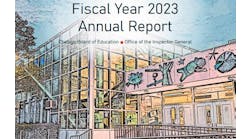If your college or university has been held hostage in the past by information applications (such as administrative portals, video cameras, access controls, environmental systems, wireless devices, etc.) each requiring their own separate network, convergence on to one robust network can be your ticket to freedom. A convergence culture enables an education institution to consolidate disparate networks, making it more efficient while saving money.
So, what do schools need to know in order to bring the benefits of convergence to campus?
On any typical day, schools have staff, faculty, security guards, vendors, and, of course, students, whose individual systems all carry their own costs and maintenance. The multiple moving parts in any institution makes convergence culture especially appealing: convergence culture enables schools to merge all those individual systems onto one consolidated network and the savings in time and investment to deliver these applications to the business are extremely beneficial.
There are some common convergence hang-ups to be aware of. IT managers, for instance, might be wary. Many tend to focus on what they know, and worry about taking responsibility for the network and the knowledge needed in this new converged environment. In addition, IT is not known for its savvy engagement with other business units and adjacent application owners. Convergence in higher- learning environments especially demands IT personnel to understand the organization itself. This requires IT to engage with other stakeholders, such as facilities, security, admissions, faculty and the university cabinet to understand their needs and be able to deliver on them. For some of these stakeholders, convergence equates with consolidation, which translates to a loss of responsibility or power--much like the transition that’s happened in the past with voice systems and now video.
As the network encompasses more of these technologies, the need for it to be always on and the risk of a single point of failure with a more impactful effect grows. However, the value of minimizing parallel networks, consolidating resources, creating new standards by which all business and information applications will adhere to with one deeply invested owner outweigh the hurdles to get there.
Presenting the Convergence Case
School technology administrators must make a strong case in order to expand the budget and their seat at the strategic table. What points should be emphasized when presenting the case for convergence?
1. Cost Savings. Naturally, finding ways to save money a high priority for any institution, and this particular point will be appealing. Convergence allows an organization to group typical administrative applications on the same network.
2. Serviceability. One network (as opposed to many) is easier to maintain and service. In addition, the IT staff will have the ability to create a more robust and redundant utility grade network in a planned way. Most data network companies have invested in strategies with certain amount of built-in redundancy (so there are alternative ways for the network to perform). Separate networks can’t offer as many alternatives.
3. The Big Picture. A single network offers higher security and provides a more cohesive business architecture. This can make a huge impact on the daily functions of IT staff and, most importantly, end users.
Convergence makes a strong business case for itself. Once schools can show the organizational value and the savings that can be recognized through a more centralized approach, the initial investment to get there will get the attention it needs--and increase the technology budget. However, there needs to be a plan that shows how the transformation is going to take place, that all stakeholder concerns will be addressed, and that the risk associated in having one network will be mitigated. Institutions need to be willing to invest time to understand these new information applications that were never part of their domain. Most important, IT needs to align itself with a networking partner (below referred to as a trusted adviser) that embraces convergence and has surrounded itself with a stable of partners that can help them to provide a consistent “Always On” experience through the life cycle of this new converged environment.
Once schools have made the case for convergence, the responsibility of preparing the organization and mitigating risk falls to the technology staff. The best bet for a smooth convergence transition is to plan, plan, plan ahead.
Finding a Trusted IT Adviser
One of the first priorities is to find a trusted IT adviser to work with. Schools need someone who knows what they’re doing and who can competently guide them through the convergence process. Ideally, the adviser should have experience in converging university systems, as their needs are quite different from those of a retail business (for instance, colleges and universities might require 6+ devices connected wirelessly in each computer lab or residence hall room).
Furthermore, the presence of a seasoned adviser will reassure current IT managers who are focused on protecting everything that the organization has built so far. To that end, schools will want someone who communicates well and perceives IT as a fused, integral part of the university, rather than an offshoot or cost center. An institution could not run without technology, and learning how the organization works should not frighten off the adviser–nor should conversations about how to address all stakeholder concerns. In addition, make sure that the adviser plays well with others and has established relationships with other reliable IT vendors; technology has become so complex that any vendor who claims to “do it all” should be considered suspect.
Hopefully, the IT adviser will work to minimize risk as much as possible. Play it safe and pick a window of time when any necessary downtime will be the least disruptive. A lot of applications are sensitive, so make sure that they’re never really “down,” but rather have backups running parallel while transitioning to one IP-centric network.
Obviously, finding an IT advisor will require time and research. Taking the time to select the right adviser, however, will help prevent complications (and likely money) in the long run.
Transitioning to a convergence culture can save institutions money, provide a more cohesive business architecture, and ultimately make life a lot easier for students, faculty and staff.
Cronin serves as the senior vice president of Atrion Networking Corporation. He can be reached at [email protected].

